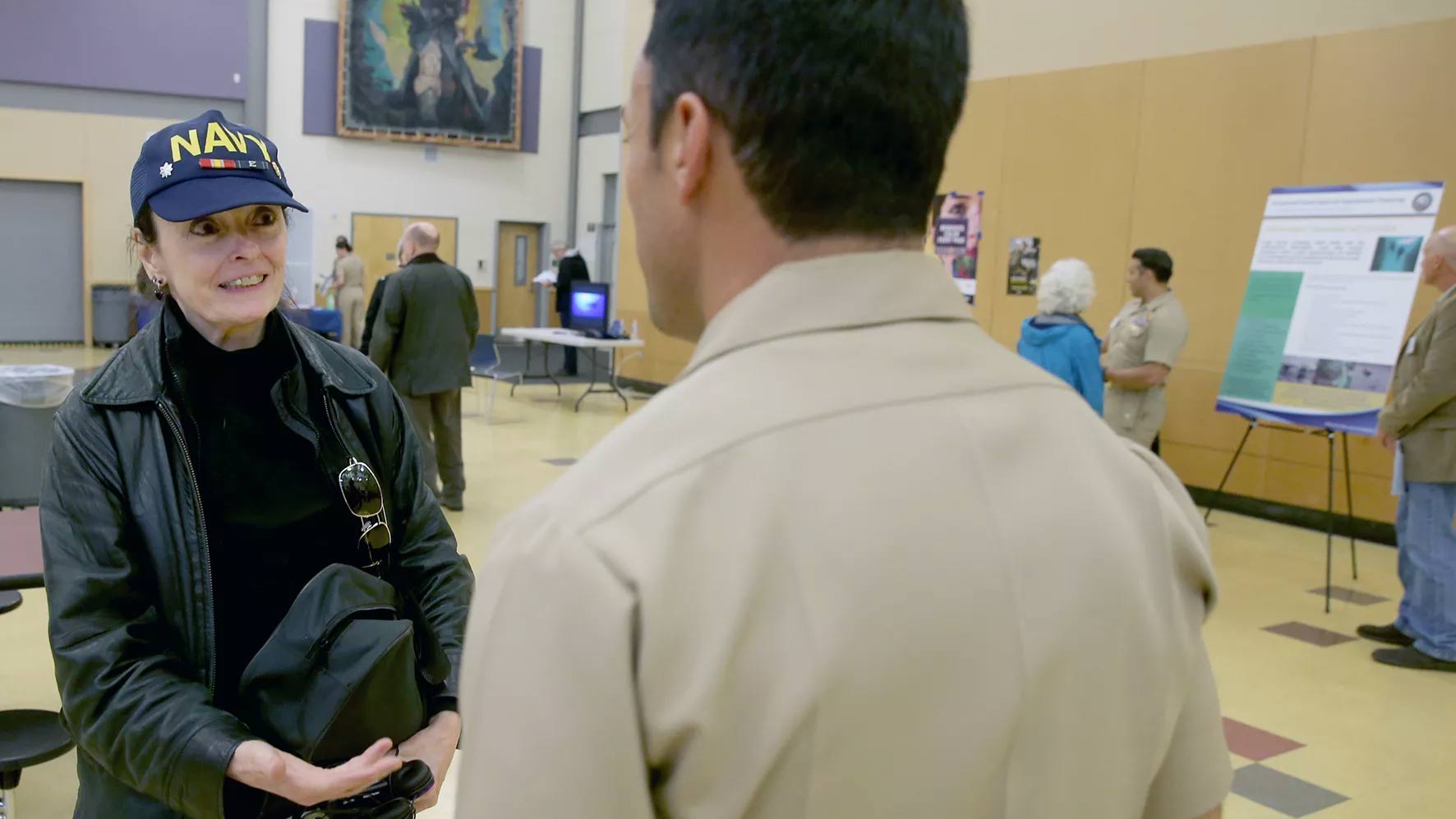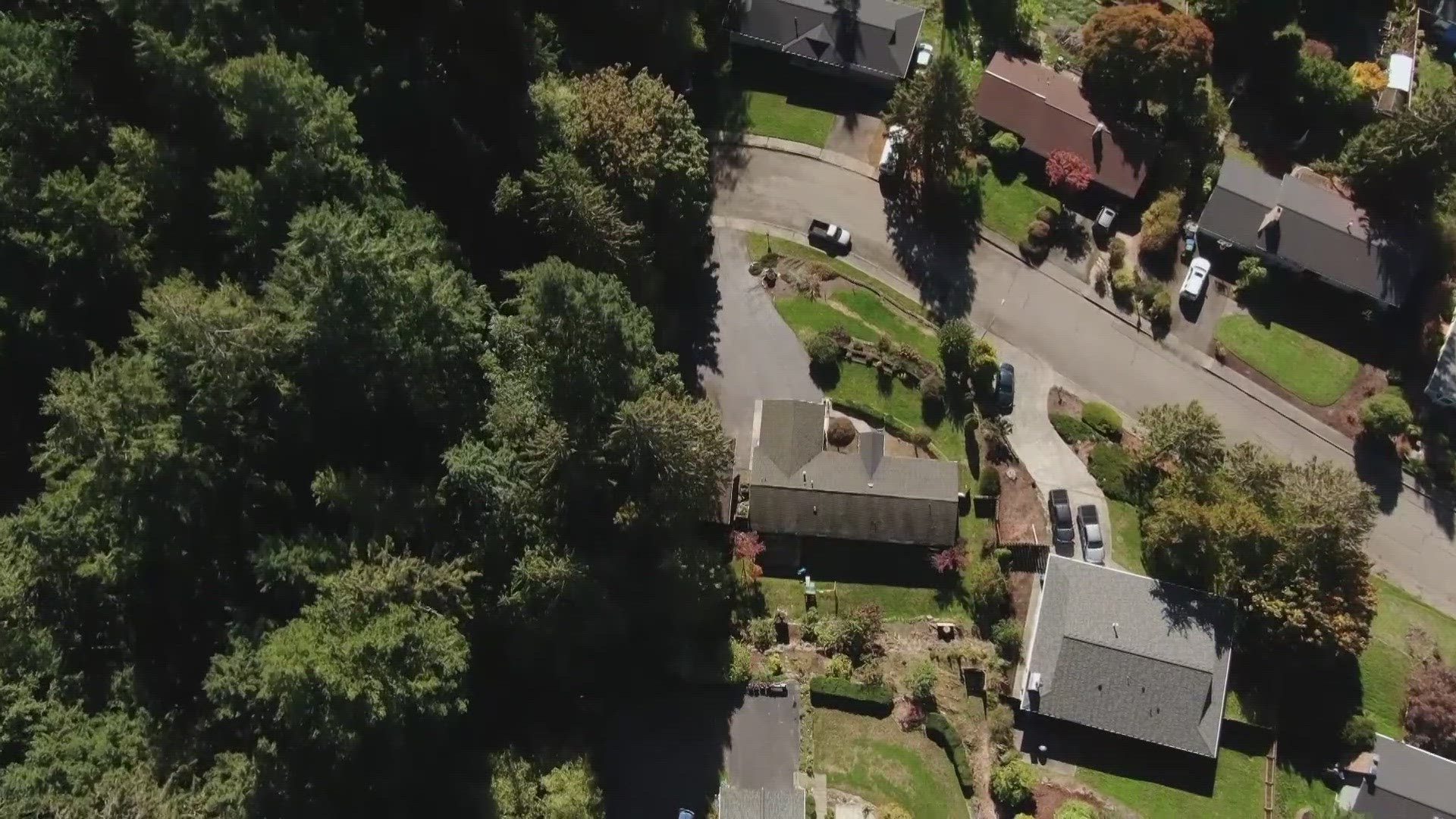The Navy has conducted special operations training in the Pacific Northwest for at least 30 years, but it's rare for the public to catch a glimpse of the exercises, since they are designed to go undetected.
"The nature of the activities is such that they’ll leave no trace," said Karen Waller, a contractor with the Naval Special Warfare Command. "That's their whole mission and the purpose of their training – it's to not be noticed or leave a trace that they’ve been there."
The growing demand for special operations missions worldwide "has triggered the need for an increase in the training tempo" in the Northwest, prompting the Navy to seek to ramp up training efforts in the region in past few years, said Navy Region Northwest spokeswoman Sheila Murray.
Navy officials, including special operations service members, discussed plans for stepped-up training in the Northwest during a meeting Tuesday at North Kitsap High School.
"The public should never come across the operators during training," said Steve, a Naval Special Warfare Command member, who declined to be identified by his last name due to security concerns. "If they do, then it’s a big mistake."
At most, community members might notice a few more Navy support ships in the water and some white t-shirt and khaki pant-clad support crew members on the shoreline as a result of more exercises, said Daniel, a chief warrant officer in charge of leading training operations.
The Navy released a draft environmental assessment on Jan. 23 that delineated a proposal to ramp up training efforts in the region by increasing the size of special operations training groups, conducting more training cycles in the Northwest and adding a few new skills to the line-up for trainees to practice.
In the Northwest, special operation trainees already practice a variety of missions, including diving and swimming; insertion and extraction; launching and recovering small submersible watercraft; unmanned underwater vehicle launching and recovery; over-the-beach exercises; special reconnaissance techniques; and simulated building clearance exercises.
The Navy would like to being conducting high-angle climbing and unmanned aircraft systems piloting training in the region, as well.
At Tuesday's meeting, proponents and opponents of the Navy's plans showed up to learn more about the proposal and voice opinions about it.
Several people who came to the meeting expressed concern about the use of public lands for Navy training exercises.
The Navy was granted permission in 2014 to begin using public lands for training at Scenic Beach, Illahee and Blake Island state parks in Kitsap County; at Mystery Bay and Fort Flagler state parks on Marrowstone Island; and near Naval Magazine Indian Island in Port Townsend Bay. Since then, curious onlookers have spotted small, black submarine-like underwater vehicles in the water just off the at Tracyton boat launch and at Bremerton's Evergreen-Rotary Park.
With the recent proposal, the Navy would like to also begin conducting high-angle climbing training at Deception Pass State Park.
"I just really object to the whole notion of using our public lands that were never intended to have a military purpose or mission to be used for military training," said Brian Watson with the Poulsbo-based Ground Zero Center for Nonviolent Action. "It's not part of their mission, and for a good reason because these are places that families should be able to go to and enjoy in peace and without fear."
Another Ground Zero Center member, Mary Gleysteen, was troubled by a further expansion of military training exercises into the public sphere.
"My concern is about our community and about how the Navy is a bully. It just seems that there is an increase in the infiltration of our daily life by the Navy and it's normalization of warfare to have special operations and Navy SEALs in public parks and spaces that are designed for recreation and relaxation and appreciation of the environment," Gleysteen said.
The Navy said it does not plan to close down or restrict access to state parks or public lands during exercises.
Mark Barabasz, a Ground Zero Center advocate, raised concerns about the impact increased activity would have on the environment.
"The Salish Sea is an ecological area that under severe distress right now," Barabasz said. "It's being impacted by sea traffic, economic activities that pollute the water, just total population activities that are wrecking this area. We're in a serious situation here and I don't see how this is going to do anything other than just add to that."
Navy biologist Tiffany Nabors said training would be "low-impact on the environment."
Trainees won't use live-fire ammunition, explosive detonations or manned air operations. They would be prohibited from leaving trash or gear behind, digging, cutting or removing vegetation, climbing trees, or building campfires or other infrastructure.
Bremerton Navy League board member Helen Miller believes the Navy is a much better neighbor than some critics think. Recently, Miller witnessed the crew of a Bangor submarine clean up the lakefront at Island Lake Park.
"I watched dump trucks and pick up trucks haul garbage out of there for two days that the public had left and they're worried about the SEALS training in Puget Sound? It's incredible," Miller said. "The average family in Washington state when they go to a beach or a park, they leave more garbage behind than the average SEAL in probably ten years."
Bremerton Navy League member Barbara Mail hoped the community would recognize the value of training operations in the Northwest. She is a retired civil service worker who worked at Naval Undersea Warfare Center Division-Keyport and Naval Weapons Station Seal Beach during her career.
"Without our military, we wouldn't have our freedoms we have today, so it's important they get their training so they can protect our country. ... I think it's important the we take our military serious and respect them," Mail said.
Special operations trainees come to the Northwest for advanced training, after going through basic training and qualifications.
"The diversity of the environment is what makes this place so important," project member Steve said.
In the Northwest, trainees have the opportunity to practice in the rain, fog, and low visibility. They can practice navigating tides and currents that replicate many extreme and diverse conditions found in waterways across the globe, and the Northwest offers the opportunity to practice that navigation in both open-ocean and inland waterways.
Before arriving in the Northwest, the trainees have already completed the intermediate-level training in Hawaii, which happens in warm weather with warm water.
"In Hawaii, you have warm water, minimal currents and tides, crystal-clear blue water with sandy beaches with a bathymetry that’s basically nothing," Chief Warrant Officer Daniel said. "Here, it’s basically the opposite of that."
That temperature change alone adds a dimension of complexity to their training operations.
"When they get up here, this is cold water, which means their gear changes, their procedures change," Steve said. "With the amount of equipment and gear that’s added to this because of the cold water, it changes the entire spectrum of what they’re doing and how they do it."
Mastering exercises in these conditions help trainees be prepared to respond to any situation that may arise, said project member Matt Hahn.
"If you look at the land and the cold water interface in the Northwest, it’s probably one of the most challenging environments in the continental United States," Hahn said. "If you look at the role of special operations folks, they have to be able to deploy and do operations missions world-wide, and they never know what kind of environment they’ll be called to and it’s usually a quick reaction so you don’t have time to train up."
Hahn said that kind of preparation was an invaluable asset to mission-readiness.
"If you had firefighters, and all they ever knew how to put out was a car fire, what happens when a house is on fire?" Hahn said. "It’s a different firefight. So we have to give our special operators that dynamic, changing training to be able to meet their mission requirements."
If the Navy moves ahead with the proposal, it would mean a significant increase in the amount of training activities in the Northwest across the region.
Training blocks in the region would increase from the current level of two per year to six. Each training block would increase from 70 special operations trainees and support personnel to 84 who would arrive in the state for two to eight weeks of training.
The proposal breaks down the Northwest into three training regions. The first region is composed of potential training locations that are all less than an hour away from Keyport, including Hood Canal, Dabob Bay and most of Kitsap County's waterfront. Region Two includes Deception Pass State Park, the Port of Anacortes, Naval Air Station Whidbey Island, Skagit Island and Hope Island. Region Three includes Leadbetter Point, Cape Disappointment and Fort Columbia.
In the first region, the proposal calls for increasing the number of training blocks from the current level of two a year up to six and each site could be used at a maximum of 36 times a year. Training sites in Regions Two and Three would be used every other year, up to three times a year for one training block that would last for about two weeks.
The wide range of proposed training locations and time frames for site usage is intended to keep training exercises unpredictable.
"If we learned and only dived in the same spot, I’d know it pretty much the same way I know how to get home from work and vice versa,” said Frederick, a training officer with Naval Special Operations Command. "It’s be pretty well memorized. But having a new port, or marina, or shoreline, to plan for or detail, that keeps that challenge and that training fresh."
Not all of the trainees and support personnel would operate in the same area at the same time. They'd be dispersed throughout multiple training events that would occur throughout the region. Each exercise would last anywhere from two hours to three days.
The third and final meeting of the public comments period will be held from 5 to 8 p.m. Thursday at the Oak Harbor School District, 350 S. Oak Harbor Street in Oak Harbor.
The Navy will also accept comments through Feb. 21 via email at nwnepa@navy.mil or by written comments mailed to Naval Facilities Engineering Command Northwest, Attention: Project Manager, EV21.AW at 1101 Tautog Circle, Suite 203, Silverdale, WA 98315.
The proposal can be found at https://navfac.navy.mil/NSOEA.


